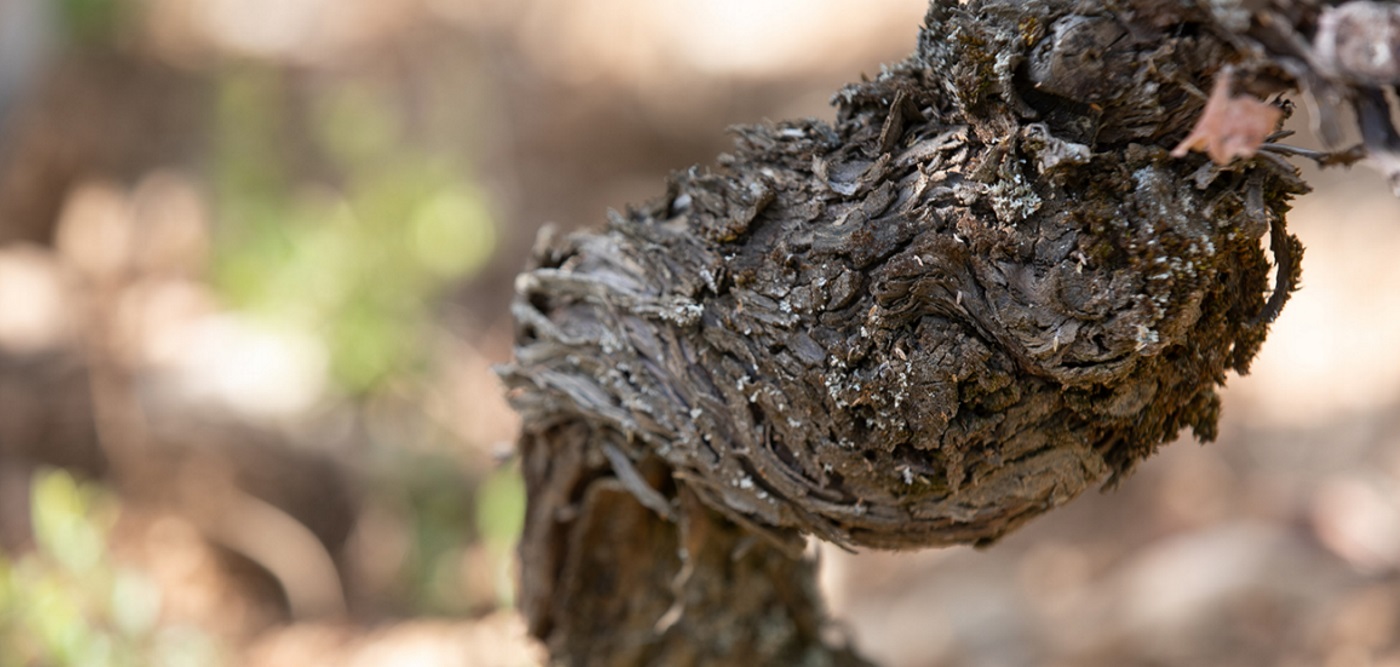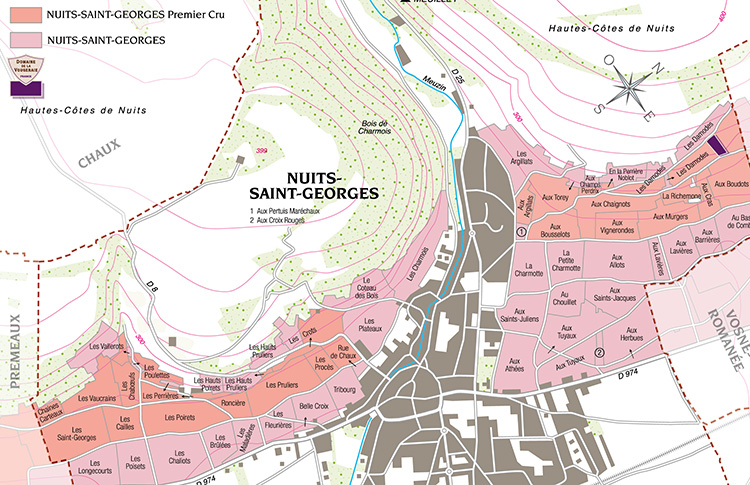Les Damodes’s origins, Celtic or Gallo-Roman, are lost in the midst of time. Does this name conjure up a trinity of female deities, similar to the Bonnes Mares? Protectresses of earthly fruit and maternity, these goddesses were worshipped in the region. To the east of Nuits, the Gallo-Roman settlement of Les Bolards covered 15 hectares, and had a very active Mithraic temple. Or perhaps the name evokes druidesses who lived in the coomb. From the Middle Ages, Nuits wine took on a separate identity distinguishing it from Beaune wine. Whereas the Côte de Beaune produced a light-coloured wine (œil-de-perdrix), best drunk young or even primeur, the Côte de Nuits strove to produce a dark velvety-coloured wine, a wine to lay down, deliberately powerful and tannic. It ages well due to its solid qualities, which were highly appreciated in the 17th and 18th centuries at the Court of Versailles, as well as abroad. The German courts were particularly partial to Nuits wine. Nuits wine is renowned for ageing well, whereas Beaune wine is best drunk younger. At that time a
Technical sheet
The appellation
“The velvety smoothness of good

The vine
Geographical situation: Nuits-Saint-Georges has a strong, unbridled personality. The town is perched below the hillside, at the opening of the La Serrée comb. A small stream, the Meuzin, makes its way down from the Hautes-Côtes. Les Damodes is the town’s northernmost climat, on the border with Vosne-Romanée.
Surface: 0.9223 ha
Geographical situation: parcel on a steep slope.
Exposure: East
Plantings: 1985/1986

Grape variety: 100% Pinot Noir
Soil and subsoil: very pebbly and calcareous. Clayey silt at the top of the slope and pure silt at the bottom..
Planting density: 10 000 vines/ha
Rootstock: only clones.
Organic agriculture. Received official approval Ecocert® in 2000.
Pruning: Guyot
Vineyard news: Ullage planted out. Earthing-up of the vines in winter. Spraying of nettle and rhubarb, horsetail, yarrow, tansy, comfrey tea during each treatment. Biodynamic preparations 500 and 501 at the end of the winter and of
The wine
Harvest date: September 18th 2019 (fruit day).
Selection: hand-sorted in the vinyard and on arrival in the winery.
Yield: 27.2 hl/ha
23% whole grapes, not crushed and vatted by gravity.
No yeast addition
Maceration: pre-fermentation, cold (12-
Length of maceration: 18 days.
Cap-punched once
Length: 18 months in oak-barrels.
New barrels: 27 %
Origin of wood: Cîteaux, Tronçais.
Light and soft filtration. No fining.
February 8th , 2021 for magnums (fruit day).
February 10th , 2021 for bottles (root day).
Limited to 2737 bottles and 220 magnums.


Family Domaine at the heart of Burgundy
Contact us
7bis, rue de l’Eglise
21700 Premeaux Prissey
France
 See the pdf version
See the pdf version